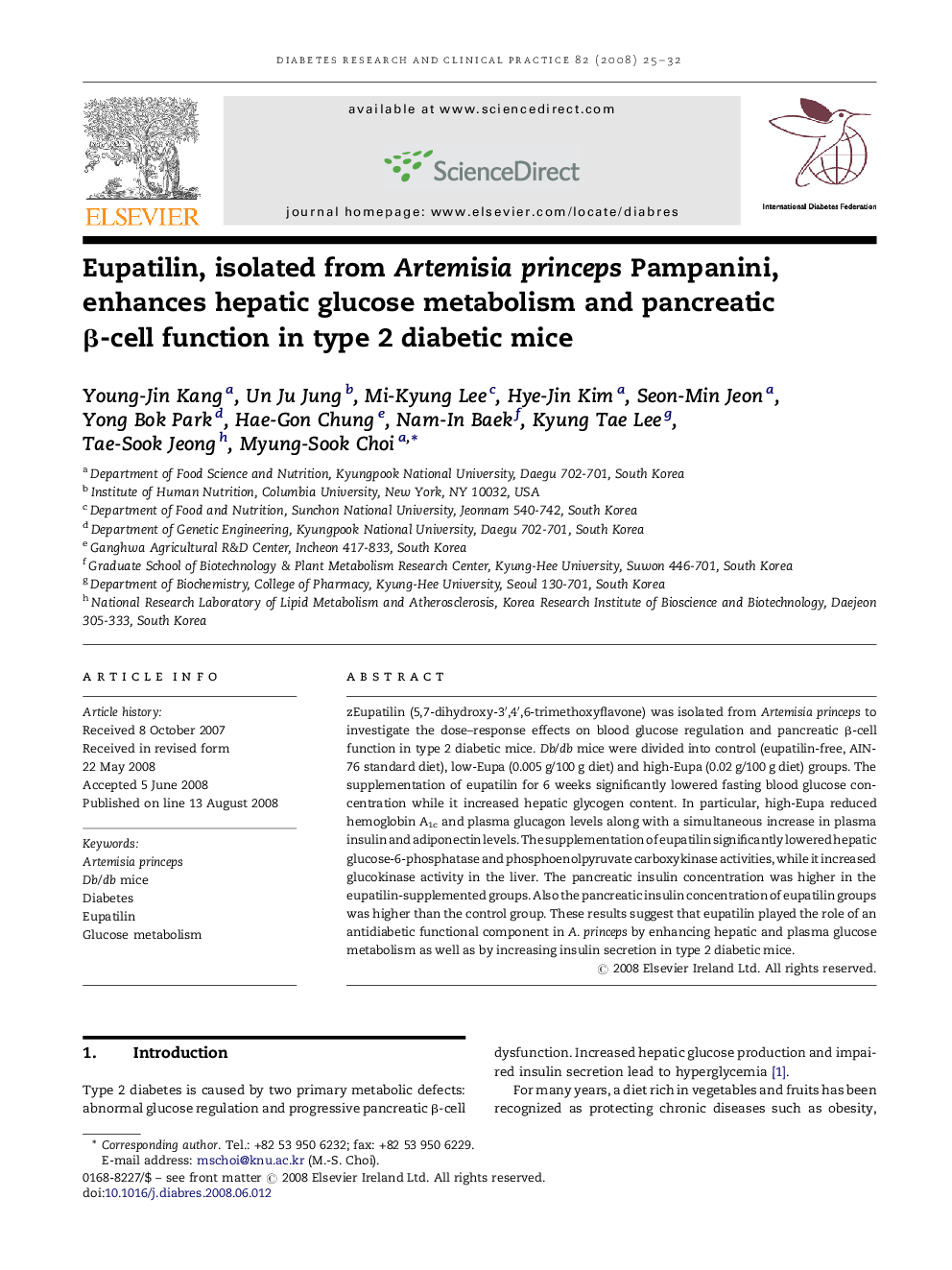| Article ID | Journal | Published Year | Pages | File Type |
|---|---|---|---|---|
| 2798273 | Diabetes Research and Clinical Practice | 2008 | 8 Pages |
Eupatilin (5,7-dihydroxy-3′,4′,6-trimethoxyflavone) was isolated from Artemisia princeps to investigate the dose–response effects on blood glucose regulation and pancreatic β-cell function in type 2 diabetic mice. Db/db mice were divided into control (eupatilin-free, AIN-76 standard diet), low-Eupa (0.005 g/100 g diet) and high-Eupa (0.02 g/100 g diet) groups. The supplementation of eupatilin for 6 weeks significantly lowered fasting blood glucose concentration while it increased hepatic glycogen content. In particular, high-Eupa reduced hemoglobin A1c and plasma glucagon levels along with a simultaneous increase in plasma insulin and adiponectin levels. The supplementation of eupatilin significantly lowered hepatic glucose-6-phosphatase and phosphoenolpyruvate carboxykinase activities, while it increased glucokinase activity in the liver. The pancreatic insulin concentration was higher in the eupatilin-supplemented groups. Also the pancreatic insulin concentration of eupatilin groups was higher than the control group. These results suggest that eupatilin played the role of an antidiabetic functional component in A. princeps by enhancing hepatic and plasma glucose metabolism as well as by increasing insulin secretion in type 2 diabetic mice.
